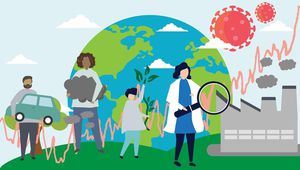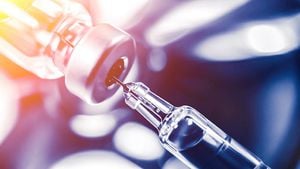DETROIT — The future of Tesla's “Full Self-Driving” (FSD) system hangs in the balance as the National Highway Traffic Safety Administration (NHTSA) has launched an investigation following reports of several incidents, including one fatal crash involving a pedestrian. This probe raises serious questions about the safety and efficacy of Tesla’s controversial self-driving technology, which is currently operational in about 2.4 million vehicles produced between 2016 and 2024.
The investigation was opened on October 17, 2024, as the NHTSA received reports of multiple accidents where Tesla vehicles utilizing FSD encountered adverse weather conditions, such as sun glare, fog, and airborne dust. Notably, one of the incidents resulted in the tragic death of a pedestrian on Interstate 17 near Rimrock, Arizona, on November 27, 2023. Here, the driver’s visibility was reportedly compromised by bright sunlight, causing the fatal encounter.
The Arizona Department of Public Safety indicated the details surrounding the crash were particularly troubling, noting the pedestrian was helping direct traffic following another vehicle collision when they were struck by the Tesla. No charges were pressed against the Tesla driver as the crash was attributed to the sun’s glare, echoing similar conditions reported in other incidents involving FSD.
Many have raised allegations against the performance of the FSD system, arguing it lacks sufficient technical sophistication, especially compared to competitors who incorporate radar and LIDAR (Light Detection and Ranging) alongside cameras for obstacle detection and handling low-light or foggy conditions. Critics assert Tesla's reliance solely on camera technology is inadequate for ensuring full autonomous driving capability.
Elon Musk, CEO of Tesla, faces increasing scrutiny for his past declarations about the system’s capabilities. Since its introduction, Musk has touted FSD as being on the verge of achieving full autonomy, claiming it would soon be able to navigate completely without driver intervention. Yet, the technology has continually fallen short of these expectations.
Earlier this month, during a glitzy demonstration of Tesla’s upcoming fully autonomous robotaxi, Musk mentioned they planned to release models without traditional driving controls. Available prototypes were showcased, but many industry analysts remain skeptical, questioning whether Tesla can make these lofty promises feasible.
The recent investigation marks the NHTSA's renewed focus on the FSD system's capabilities, especially its ability to detect and respond appropriately under reduced visibility. They intend to sift through Tesla's past updates to ascertain any potential influences on FSD’s performance under these conditions. Following two major recalls related to the system for issues concerning disobedience of traffic laws, the scrutiny around Tesla’s autonomous technology is intensifying.
Musk has long stated, "A human driver needs to be ready to take over at any moment," labeling FSD as merely assisting rather than replacing human drivers. This reality faces stark contradiction against the marketing language used by Tesla, which suggests capability well beyond simple driver assistance.
Critics argue the confusion surrounding FSD capabilities is leading to dangerous consumer misconceptions and improper reliance on the software's effectiveness. Such misunderstandings could shape not only regulatory attitudes toward Tesla but also affect public perception of autonomous vehicles as a whole.
Michael Brooks, executive director of the nonprofit Center for Auto Safety, reflected on the current investigations, stating, "The distinction has shifted to question whether FSD systems are even capable of recognizing safety hazards—regardless of driver engagement. It’s quite concerning.”
Meanwhile, Tesla continues to maintain its stance on the safety of its vehicles, standing behind the premise of future advancements expected within the self-driving domain. But as regulatory bodies keep pace with fast-evolving technology, the scrutiny surrounding FSD, its rollout, and the future of fully autonomous vehicles is likely to grow.
The next steps will be pivotal: Should the NHTSA find substantial faults, it may not only hinder Tesla’s self-driving ambitions but also lead to broader changes within the standards and regulations governing semi-autonomous and fully autonomous systems.
The ramifications will likely echo through the industry, especially as competing firms like Waymo make headway with their autonomous fleets, potentially setting them apart from Tesla’s persistence with its ambitious yet contentious approach.



